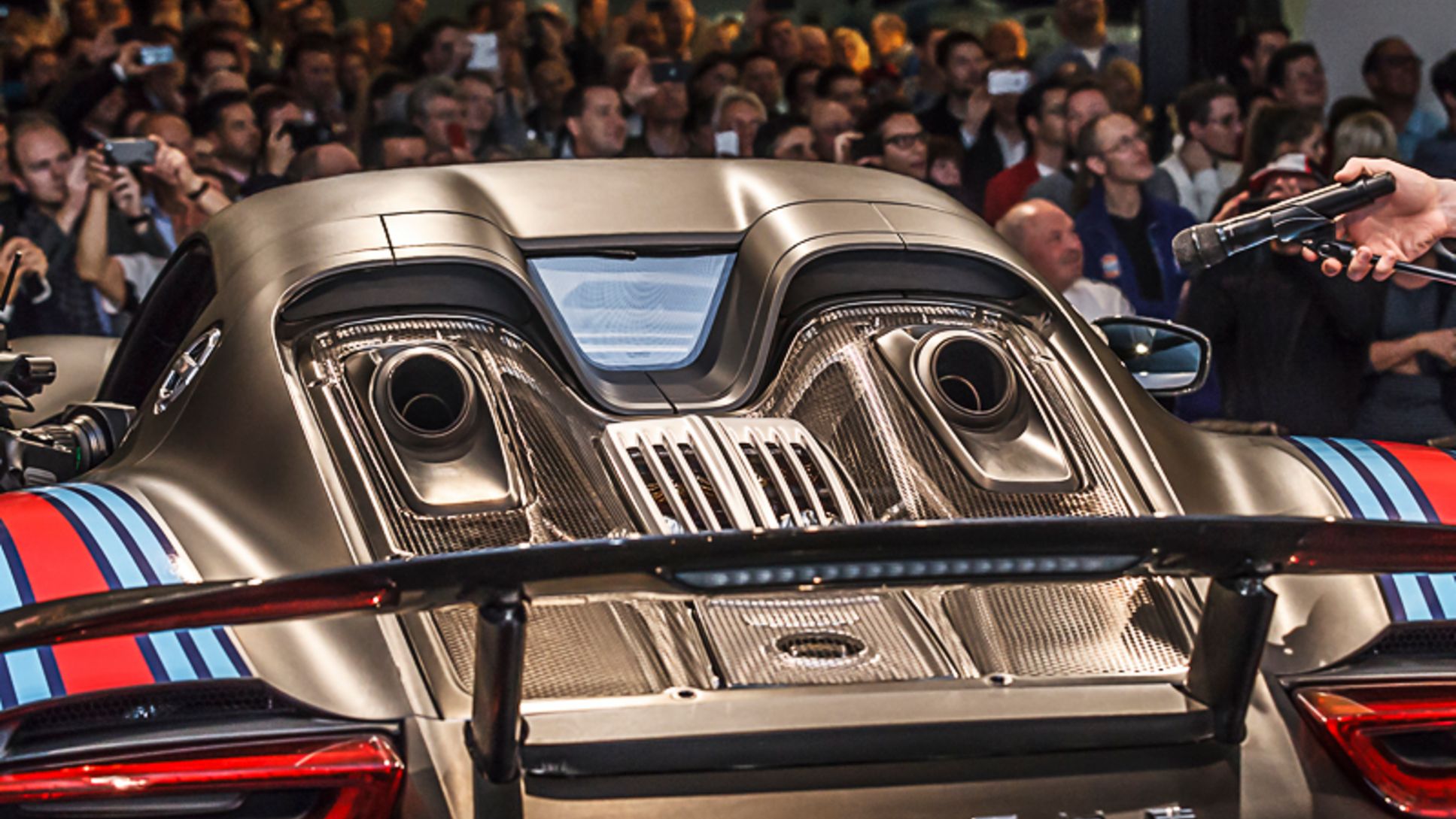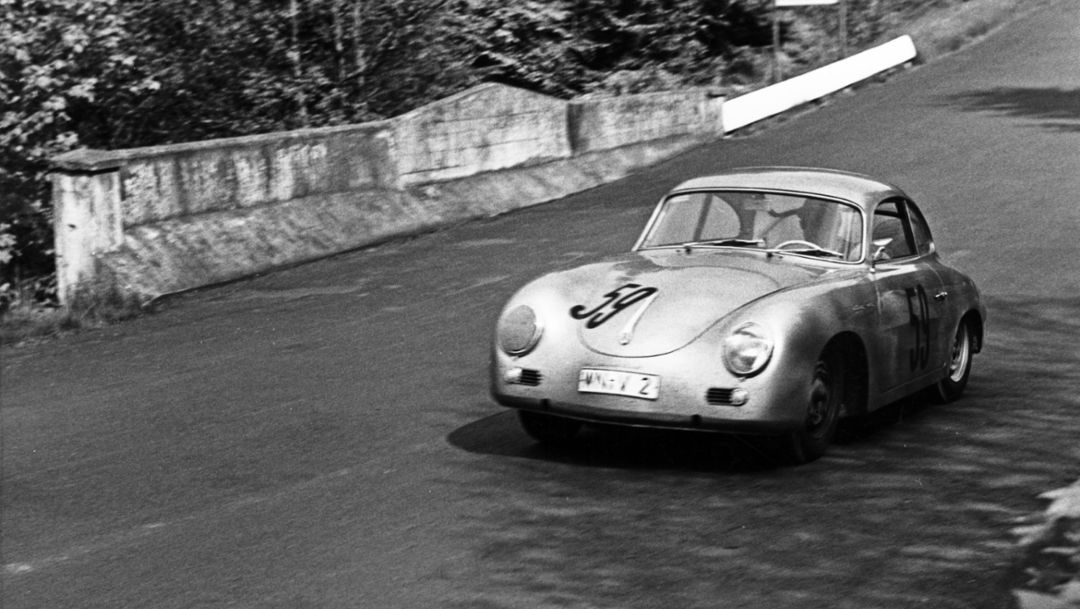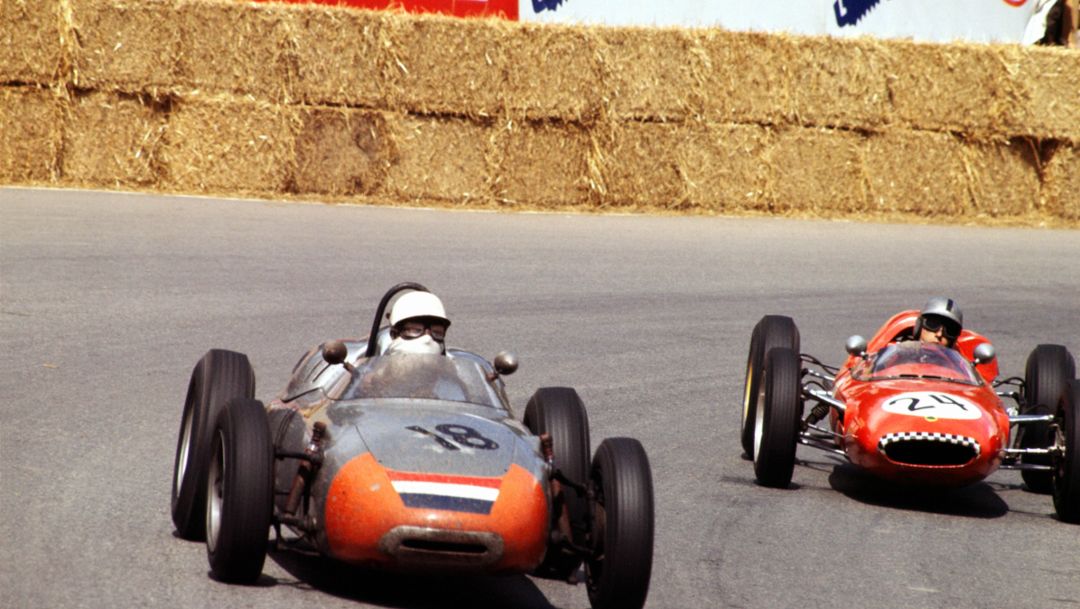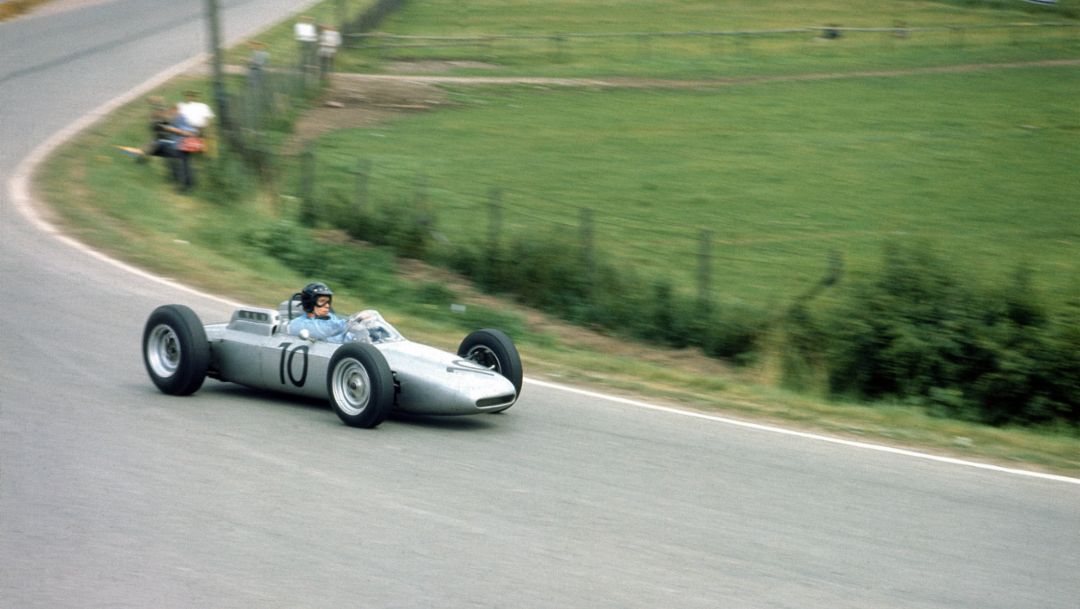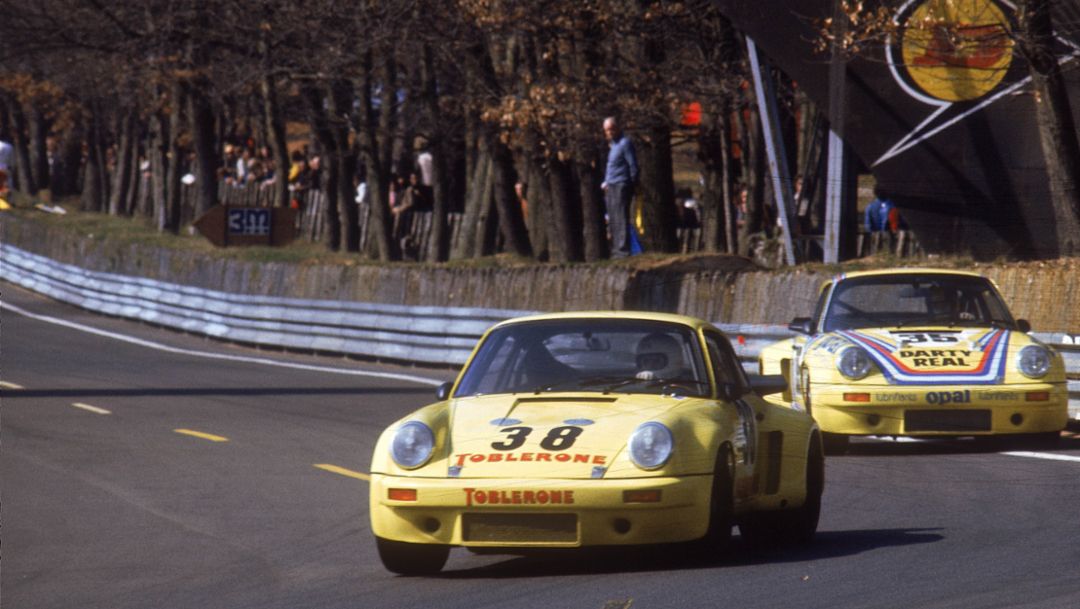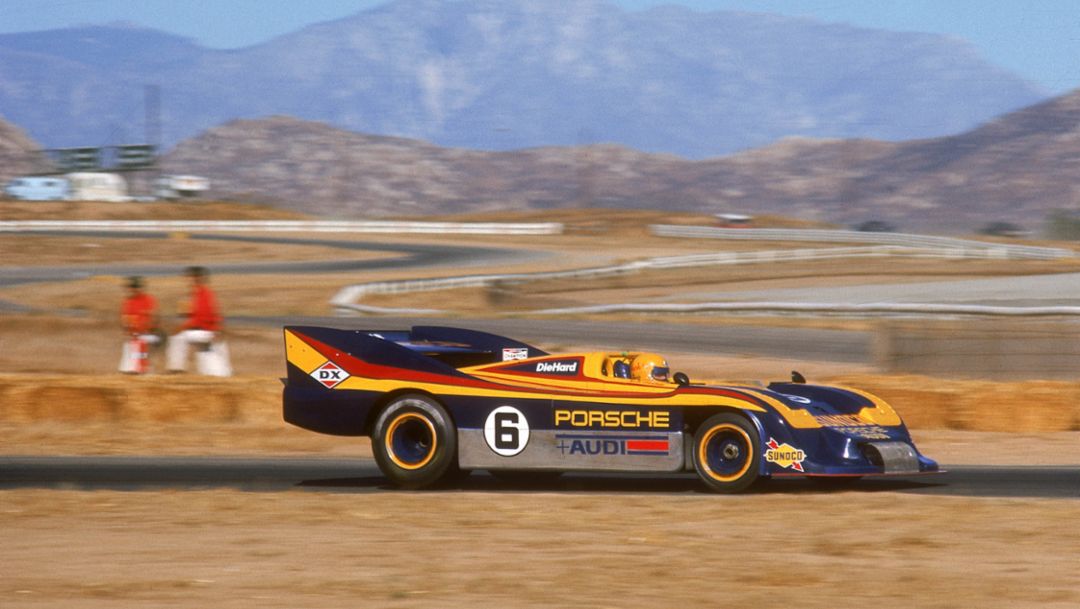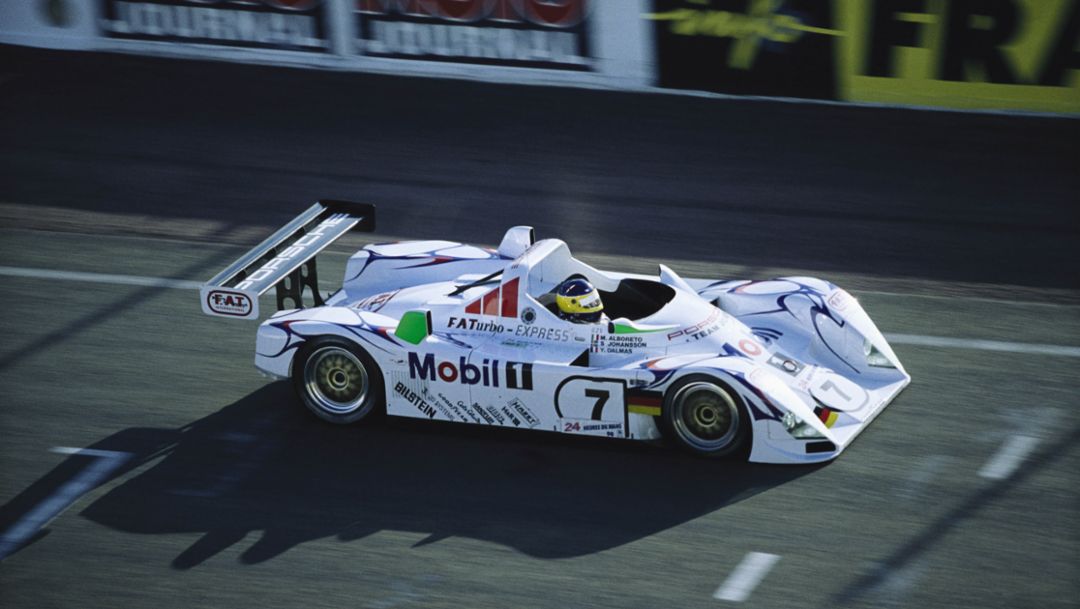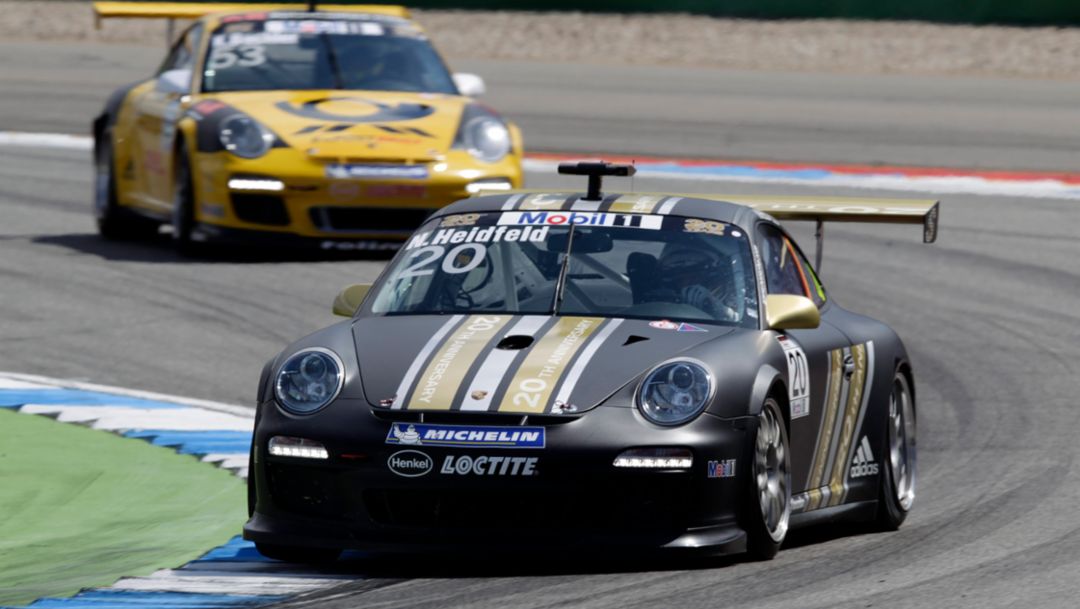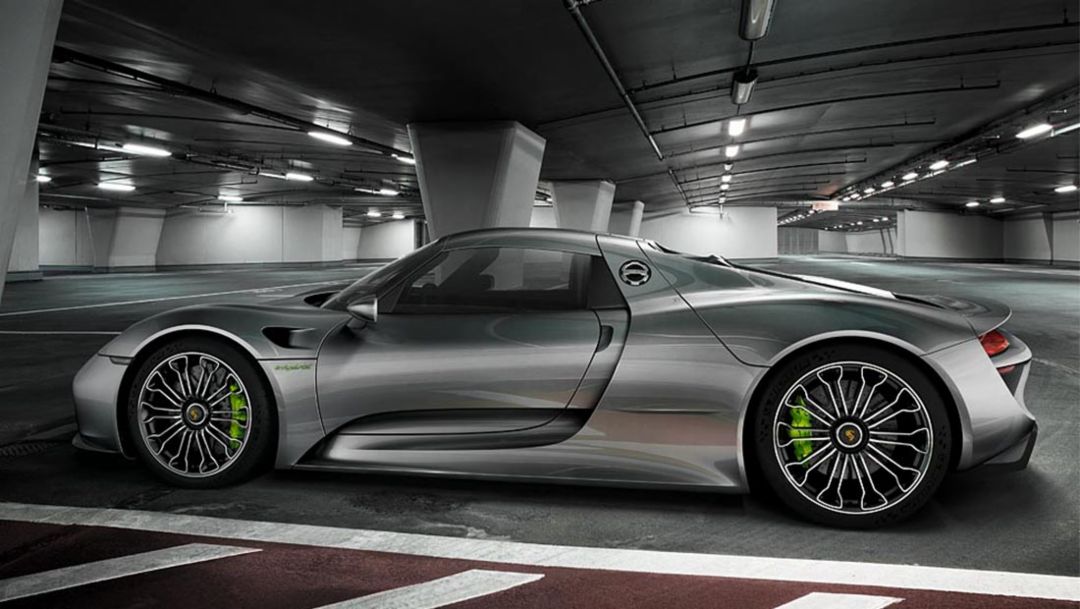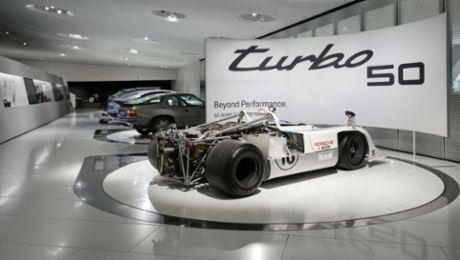Porsche 356 A 1600 Carrera GT „V2“
Model Year: 1957
Engine: 4-Zyl. Boxer
Displacement: 1588 ccm
Power Output: 125 PS
Top Speed: 200 km/h
From 1957 onwards Paul Ernst Strähle and his 356 A Carrera GT were very successful in all kinds of different races and rallies. In the 1957 Mille Miglia he achieved a class victory, and also in the 1957 1000 km Nürburgring race. The number plate was WN - V 2. Incidentally, the "V2" was a pure coincidence as this number just happened to be free at the District Office. At the "Porsche Sound Nacht" Paul Ernst Strähle's son will be presenting the legendary vehicle.
Here is the sound of the Porsche 356 A 1600 Carrera GT „V2“.
Porsche 718 Formel 2
Model Year: 1960
Engine: 4-Zyl. Boxer
Displacement: 1498 ccm
Power Output: 150 PS
Top Speed: 250 km/h
The “Formula” racing regulations of the 1960s call for racing cars with exposed wheels. Porsche develops a compliant single-seater; it is based on the successful 718 RSK, but has a longer wheelbase in order to accommodate larger fuel tanks, as well as a steering wheel in the center of cockpit. In 1960, this successful 718/2 wins the unofficial Formula Two Manufacturers’ World Championship “Coupe des Constructeurs” and performs so well by 1961 that it is successfully used in Formula One races.
Here are the sounds of the Porsche 718 Formel 2 and the Typ 804 Formel 1.
Porsche 804 Formel 1
Model Year: 1962
Engine: 8-Zyl. Boxer
Displacement: 1494 ccm
Power Output: 185 PS
Top Speed: 270 km/h
In July 1962, Dan Gurney wins the Grand Prix of France in a Type 804 Grand Prix racing car. Gurney is also victorious in Stuttgart’s Solitude race besting Joakim Bonnier in another Porsche. Weighing 461 kilograms, this lightweight, eightcylinder single-seater with disk brakes and a parallelogram suspension is the only Formula One racing car developed and built entirely by Porsche. The 804 influences many other racing-car developments at Porsche.
Here are the sounds of the Porsche 718 Formel 2 and the Typ 804 Formel 1.
Porsche 911 Carrera RSR 3.0
Model Year: 1974
Engine: 6-Zyl. Boxer
Displacement: 2993 ccm
Power Output: 330 PS
Top Speed: 280 km/h
In the last Targa Florio counting toward the world championship in 1973, Gijs van Lennep and Herbert Müller achieve a historic overall victory with the RSR. In this year, the car wins three international and seven national championships, and also triumphs in the 24 Hours of Daytona. The RSR models are Porsche’s mainstay in circuit racing. This period also marks the beginning of a new era in customer sports. At the "Sound Nacht", Jürgen Barth, Le Mans winner in 1977, presented the 911 Carrera RSR 3.0.
Here is the sound of the Porsche 911 Carrera RSR 3.0.
Porsche 917/30 Spyder
Model Year: 1973
Engine: 12-Zyl. 180° V Turbo
Displacement: 5374 ccm
Power Output: 1200 PS
Top Speed: 385 km/h
Called “one of the strongest racing cars of all time”, this advanced 12-cylinder vehicle dominates circuit races. With Mark Donohue at the wheel, it beats out McLaren with a long lead for the second time in the CanAm Series. It’s the first time that turbocharging has prevailed on a race course with so many curves. But the Americans change the racing regulations, which results in the exclusion of the 917.
Here is the sound of the Porsche 917/30 Spyder.
Porsche 935/77
Model Year: 1977
Engine: 6-Zyl. Boxer Turbo
Displacement: 2857 ccm
Power Output: 630 PS
Top Speed: 350 km/h
This production-based 935 race car is especially suited for endurance races. Following a break of five years, Porsche wins the Manufacturers’ World Championship again in 1976. At the premiere in Mugello, Jacky Ickx and Jochen Mass drive to an overall victory in this coupe with its conspicuously flat front and adjustable rear wing. The displayed car is the race version of 1977. Norbert Singer, former head of development, introduced the 935/77 and its sound to the audience.
Here is the sound of the Porsche 935/77.
Porsche 911 SC „Safari“
Model Year: 1978
Engine: 6-Zyl. Boxer
Displacement: 2994 ccm
Power Output: 250 PS
Top Speed: 210 km/h
The East African Safari Rally pushes both drivers and cars to the limit. To compete successfully, Porsche modifies a 911 by reinforcing the chassis, making a thicker aluminum floor, and raising ground clearance to 28 centimeters. With the car well out in front, everything is running according to plan until the rear-axle link breaks off when Swedish driver Björn Waldegaard hits a boulder in sludge. As a result, the 911s finish second and fourth.
Here is the sound of the Porsche 911 SC „Safari“.
Porsche 962 C
Model Year: 1987
Engine: 6-Zyl. Boxer Turbo
Displacement: 2869 ccm
Power Output: 680 PS
Top Speed: 350 km/h
Between 1982 and 1994, Porsche sports cars of the Type 956/962 win seven times in Le Mans, and dominate their competitors on other racetracks in the world as well. The 962 C is based on the 956, with a wheelbase that is 120 millimeters longer. A bi-turbo version is raced in Europe, an IMSA version with turbocharger in North America. The vehicle on display here was raced to victory in Le Mans by the driver trio Hans-Joachim Stuck, Derek Bell, and Al Holbert in 1987. Stuck, who was the third time at the "Sound Nacht", showed the sound of his winning car.
Here is the sound of the Porsche 962 C.
Porsche WSC Spyder
Model Year: 1998
Engine: 6-Zyl. Boxer Turbo
Displacement: 3200 ccm
Power Output: 500 PS
Top Speed: 314 km/h
Though these open sports prototypes are originally built for use in the United States, the Joest customer team wants to enter the WSC Spyder in Le Mans in 1996 and 1997. Success proves them right. Major winning factors include the Porsche engine’s relatively low fuel consumption and the carbon-fiber body, which is easy on the tires.
Here is the sound of the Porsche WSC Spyder.
Porsche 911 GT3 Cup
Model Year: 2011
Engine: 6-Zyl. Boxer
Displacement: 3797 ccm
Power Output: 450 PS
Top Speed: 290 km/h
The Porsche Cup-races are a success story: As well as the Porsche Carrera Cups in Germany, Asia, Japan and Italy, there are also the GT3 Cup Challenges in the United States and Middle East. Within selected Formula 1 races, the elite class of GT3 Cups takes part: The Supercup. In 2010, the Cup-model is completely revised for the Carrera Cup. It is based on the 2009 facelift of the GT3 RS and receives, as well as a revised optic, also the 3.8 litre engine from the road model.
Here is the sound of the Porsche 911 GT3 Cup.
Porsche 918 Spyder
Model Year: 2014
Engine: 8-Zyl. V-Motor + 2 e-machines
Displacement: 4593 cmc
Power Output: 887 PS
Top Speed: 345 km/h
In July, the Supervisory Board gave the green light for series development of the Porsche 918 Spyder, reflecting the overwhelming response from the public. Eugen Oberkamm, showed the sound of the vehicle and surprised the audience with a real-time video of a test drive of racer Marc Lieb on the Nordschleife.
Here is the sound of the Porsche 918 Spyder.
Consumption data
918 Spyder: Combined fuel consumption: 3,1 – 3,0 l/100 km; CO₂ emissions: 72-70 g/km; Electricity consumption 12.7 kWh/100 km
918 Spyder (Weissach package): Combined fuel consumption: 3,0 l/100 km; CO₂ emissions: 70 g/km; Electricity consumption: 12.7 kWh/100 km
